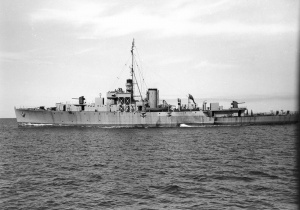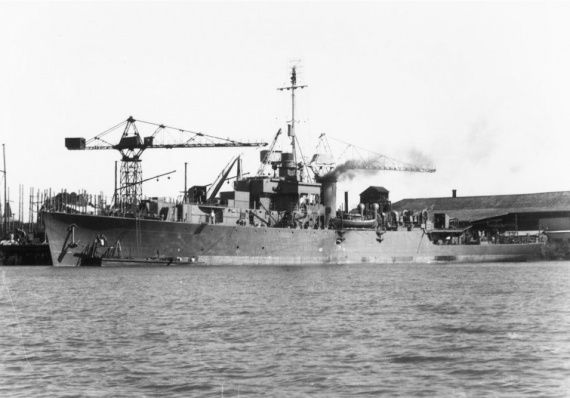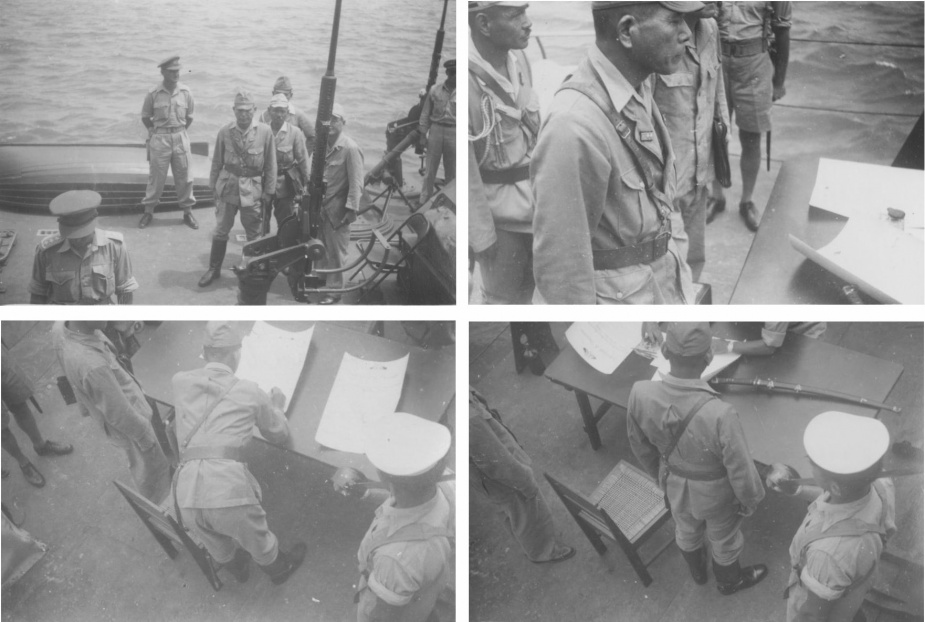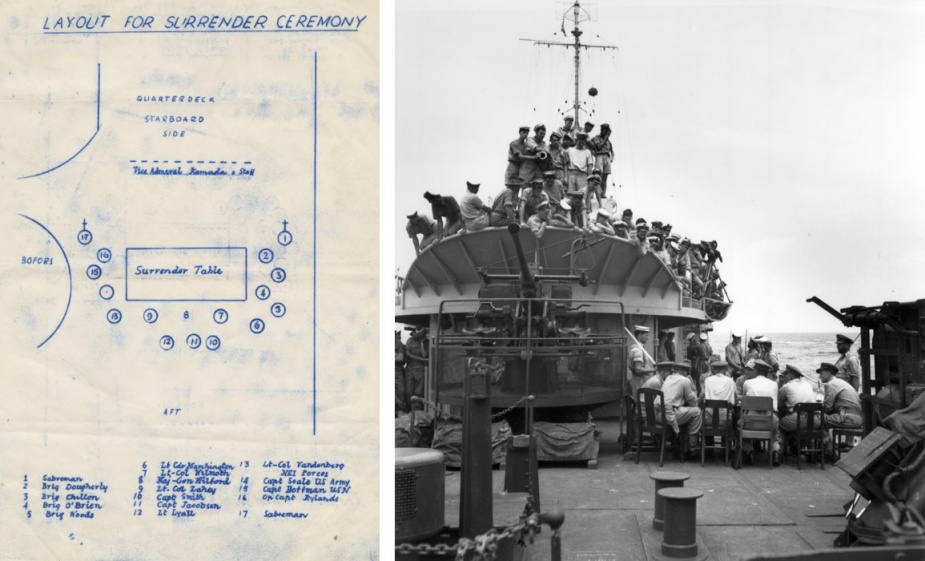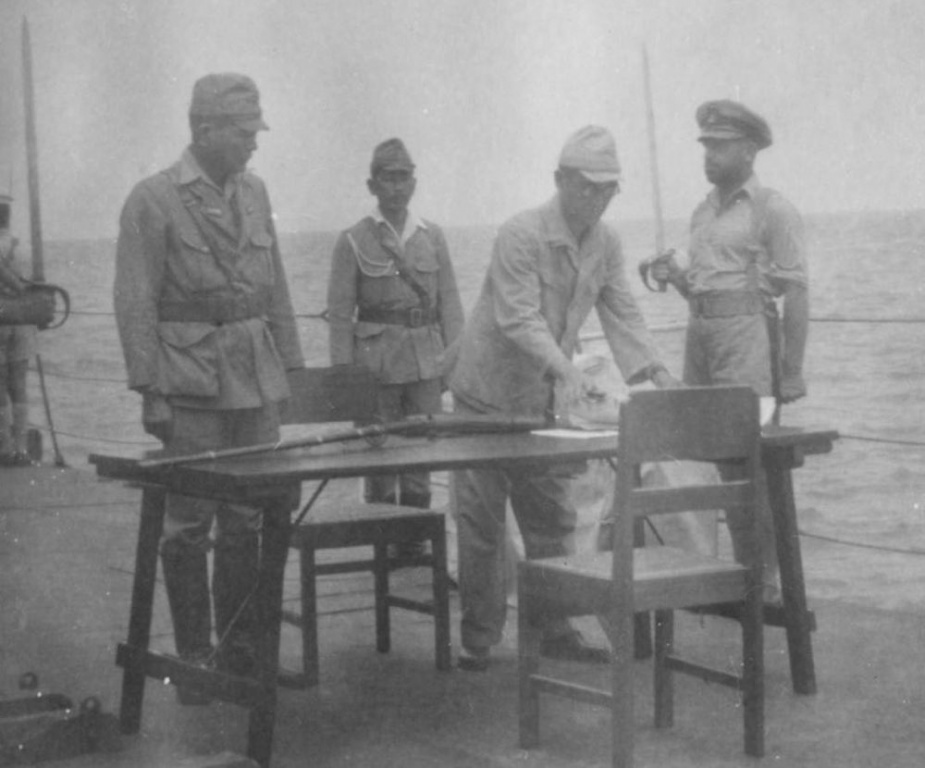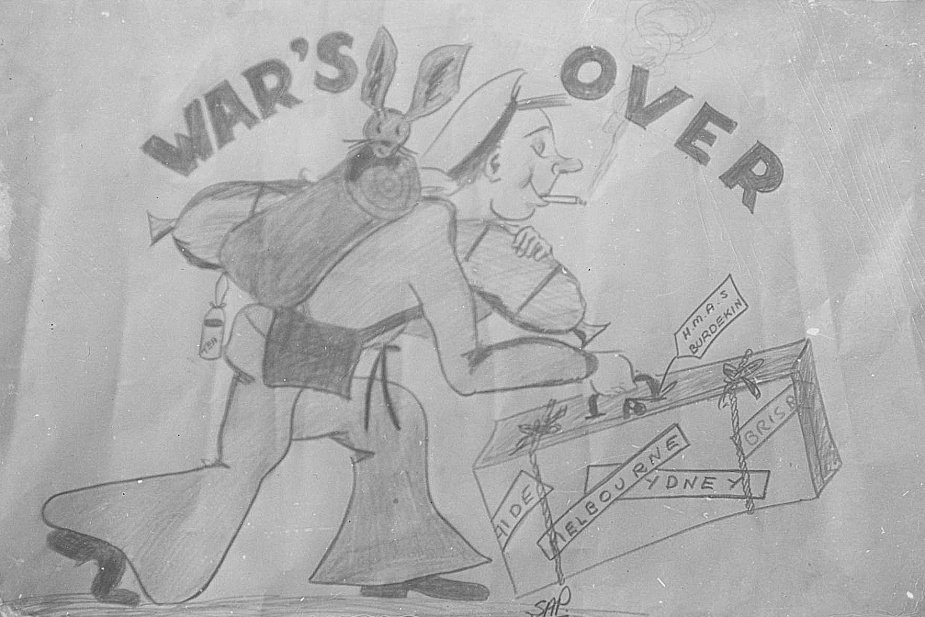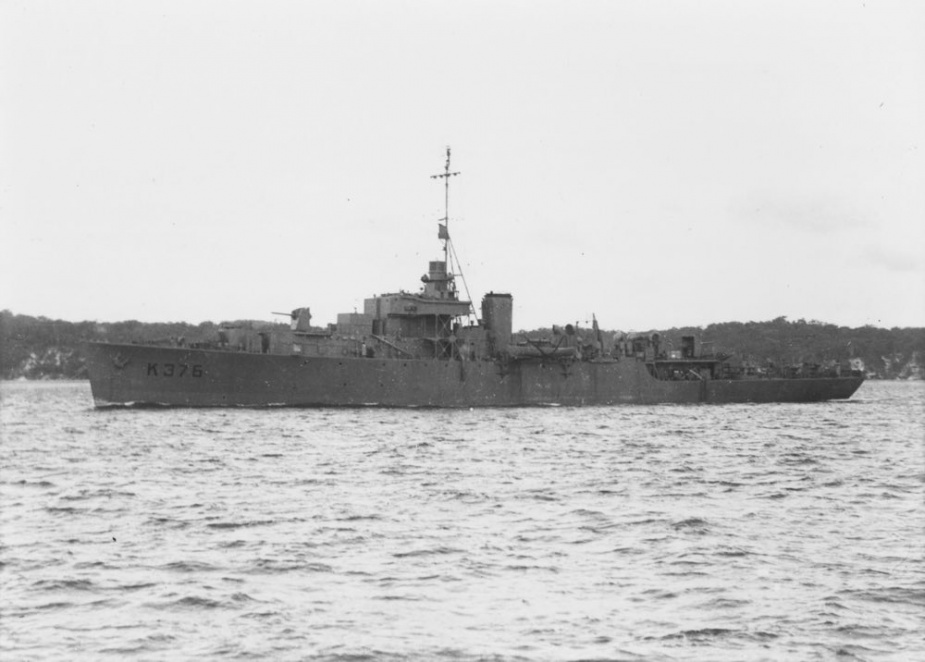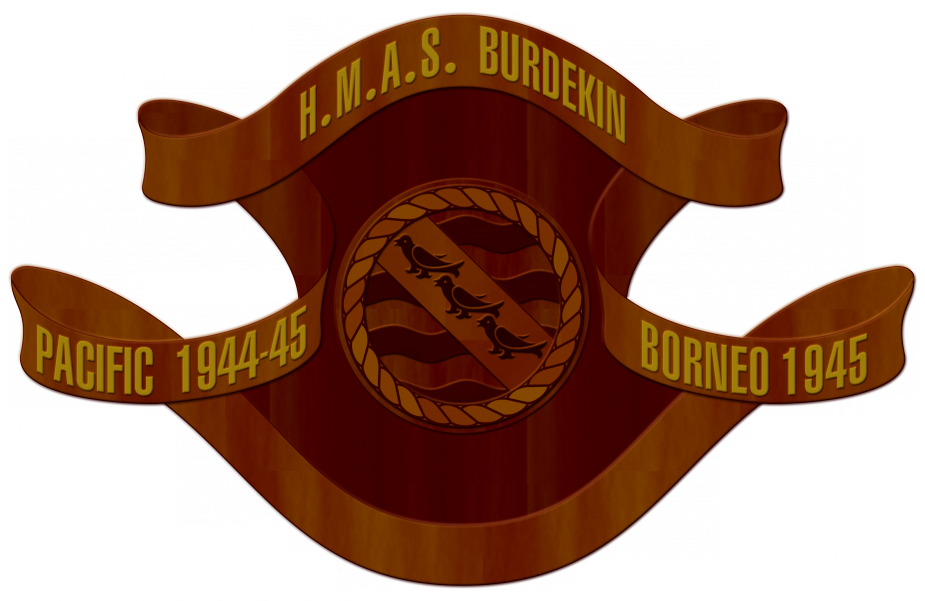HMAS Burdekin
| Class |
River Class |
|---|---|
| Type |
Frigate |
| Pennant |
K376 |
| Builder |
Walkers Ltd |
| Laid Down |
17 January 1942 |
| Launched |
30 June 1943 |
| Launched by |
Miss K Collings, daughter of the Minister for the Interior and Leader of the Government in the Senate |
| Commissioned |
27 June 1944 |
| Decommissioned |
18 April 1946 |
| Dimensions & Displacement | |
| Displacement |
|
| Length | 301 feet 4 inches |
| Beam | 36 feet 2 inches |
| Draught | 12 feet |
| Performance | |
| Speed | 20 knots |
| Complement | |
| Crew | 140 |
| Propulsion | |
| Machinery | Triple expansion, 2 shafts |
| Horsepower | 5500 |
| Armament | |
| Guns |
|
| Other Armament |
|
| Awards | |
| Battle Honours | |
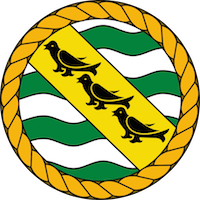
HMAS Burdekin was ordered as part of Australia’s shipbuilding program during the Second World War. Twelve of these Australian built frigates were to enter service with the Royal Australian Navy. A further ten were ordered but cancelled as the war drew to a close.
Eight, HMA Ships Barcoo, Barwon, Burdekin, Diamantina, Gascoyne, Hawkesbury, Lachlan and Macquarie, were built to the British River Class design and Australia likewise named its frigates after Australian rivers. A further four, HMA Ships Condamine, Culgoa, Murchison and Shoalhaven, were also named after Australian rivers but were built to the design of the Royal Navy’s Bay Class Frigates. These latter ships were generally known as Modified River Class Frigates although they are sometimes referred to as Bay Class.
Burdekin commissioned at Brisbane on 27 June 1944 under the command of Lieutenant Commander Thomas S Marchington RNR.
Arriving in New Guinea waters in mid October 1944, Burdekin was one of the many ships of the Royal Australian Navy which put in months of hard work escorting valuable convoys, performing anti-submarine patrols and generally made it possible for the enormous tonnage of Allied shipping to arrive safely in the forward areas to support the Allied advance.
On 19 November 1944 Burdekin bombarded the northern tip of the Halmaheras and was engaged continuously in escort duties between New Guinea and the Philippines after the American invasion of these islands.
In May 1945 Burdekin operated in support of the Australian amphibious landing at Tarakan in Borneo, and carried out surveillance operations in the Borneo and Celebes areas. Following escort duties to Morotai, she returned to Sydney for refit.
With the cessation of hostilities in August 1945, Burdekin was one of a number of ships that made an unsuccessful attempt to contact Japanese forces on the island of Ambon. Shortly afterwards, on 8 September 1945, the surrender of Dutch Borneo by the Japanese was accepted on board Burdekin by Major General EJ Milford, General Officer Commanding 7th Australian Division, from Vice Admiral Mitchishi Kamada. A surrender table had been arranged on the starboard side of Burdekin's quarterdeck. The Japanese were received on board by the First Lieutenant and taken to their position forward of the table, facing aft. General Milford and Commander Marchington then proceeded to the table. A number of questions were put to Admiral Kamada, and when the matter of signing the surrender was raised he said that he would sign on behalf of the Japanese Navy only. General Milford therupon adopted a strong tone. The instrument of Surrender was produced and Kamada signed.
The official history of the RAN in World War II records that:
Vice-Admiral Kamada was visibly affected throughout the ceremony, and particularly so when laying his sword before General Milford at the table. The surrender gave great satisfaction to the ship's company, most of whom were able to witness it from various positions.
At the conclusion of the ceremony, Admiral Kamada and his staff disembarked, and at 13:30 on 8 September, Burdekin weighed and proceeded for Balikpapan being joined en route by HMAS Gascoyne.
In company with her sister ship HMAS Gascoyne, Burdekin supported occupation operations in Borneo and Macassar, as well as evacuating prisoners of war.
Burdekin returned to Sydney on 5 January 1946. She sailed from Sydney for Melbourne on 20 March 1946, arriving two days later. Burdekin paid off into Reserve at Melbourne on 18 April 1946 and was laid up at Corio Bay, Geelong. In 1956 she was towed to Sydney.
Declared for disposal on 9 November 1960, Burdekin was eventually sold on 21 September 1961 to the Tolo Mining and Smelting Co Ltd of Hong Kong, together with HMA Ships Condamine, Hawkesbury and Reserve, for an overall amount of £53,000 sterling. The purchase by Tolo was financed by the Mitsubishi Co of Japan, through its Australian agent, HC Sleigh. Burdekin was released to Mitsubishi to be broken up for scrap in Japan. Reserve, formerly an RAN tug, left Sydney for Japan late in December 1961, towing Burdekin and Condamine.

